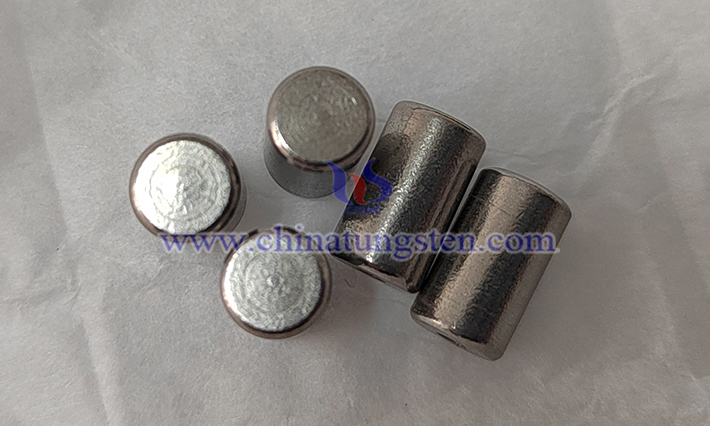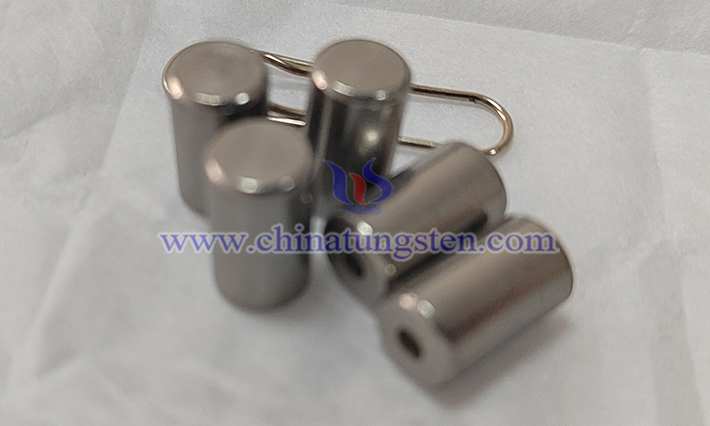Factors Affecting the Thermal Conductivity of Barium Tungsten Electrode
- Details
- Category: Tungsten Information
- Published on Tuesday, 27 May 2025 17:50
- Written by Zhenghua
- Hits: 14
The thermal conductivity of barium tungsten electrode is affected by the combined effect of multiple factors, involving multiple aspects such as material science, thermodynamics and preparation process.
1. Material Composition and Microstructure
1.1 Barium Content and Distribution
The Role of Barium: The addition of barium can significantly reduce the work function of tungsten and improve the electron emission performance, but excessive barium will lead to uneven distribution, forming a second phase (such as barium oxide) or pores, increasing phonon scattering, thereby reducing thermal conductivity.
Distribution Uniformity: When barium is deposited in the pores of tungsten in the form of nanoparticles (such as through an impregnation-reduction process), if the distribution is uniform, the local thermal resistance can be reduced; if it aggregates to form clusters, a thermal resistance barrier will be formed.
1.2 Grain Size and Porosity
Porosity Effect: The porosity of the porous tungsten matrix is negatively correlated with the thermal conductivity. For example, for every 10% increase in porosity, thermal conductivity may decrease by 15%-20% (the specific value depends on the pore structure). Porosity reduces the efficiency of thermal conduction by scattering phonons.
Grain Refinement: Adding rare earth elements (such as lanthanum and cerium) can refine the grains, but the increase in the number of grain boundaries will shorten the mean free path of phonons, further reducing thermal conductivity.
1.3 Impurities and Defects
Impurity Effects: Impurities such as oxygen and sulfur will react with tungsten or barium to form oxides or sulfides, forming a thermal resistance layer. For example, the oxidation of barium to form BaO will reduce the surface thermal conductivity.
Microscopic Defects: Defects such as dislocations and grain boundaries will scatter electrons and phonons, especially at high temperatures, the inhibitory effect of defects on thermal conductivity is more significant.

2. Temperature Effect
2.1 Temperature Dependence of Metal Thermal Conductivity
Thermal Conductivity of Tungsten: The thermal conductivity of pure tungsten at 20°C is about 162 W/(m·K), which gradually decreases with increasing temperature.
Mechanism: At high temperatures, atomic thermal vibrations are enhanced, resulting in increased electron-phonon scattering and phonon-phonon scattering, and decreased heat conduction efficiency.
2.2 Operating Temperature Range
Barium Tungsten Electrode Operating Temperature: directly affects its thermal management capabilities.
3. Manufacturing Process
3.1 Sintering Process
Sintering Temperature and Atmosphere: High temperature sintering can promote the necking and densification of tungsten particles, reduce porosity, and thus improve thermal conductivity. Reducing atmosphere (such as hydrogen) can prevent barium and tungsten oxidation and maintain material purity.
Pressing Pressure: High pressure molding can reduce initial porosity, but it is necessary to balance mechanical strength and barium impregnation requirements.
3.2 Impregnation and Reduction Process
Barium Salt Impregnation: Barium nitrate or barium carbonate solution fills tungsten pores through vacuum impregnation, and cyclic impregnation (2-3 times) can ensure uniform distribution.
Reduction Conditions: Hydrogen reduction temperature and holding time affect the deposition morphology of barium. Rapid heating can reduce barium volatilization, but local overheating should be avoided.
3.3 Post-Treatment Process
Hot Isostatic Pressing (HIP): The surface pores are closed by high pressure and high temperature, which reduces the volatilization of barium and improves the thermal conductivity.
Surface Coating: Plating Ir, Re or rare earth oxides (such as Y₂O₃) can improve the anti-sputtering ability, but the coating thickness and interface bonding strength need to be optimized to avoid increasing thermal resistance.

4. Additives and Alloying
4.1 Rare Earth Additives
Grain refinement: Elements such as lanthanum and cerium can inhibit grain growth and reduce grain boundary defects, but excessive addition will lead to a decrease in thermal conductivity.
Improving wettability: Rare earth elements can promote the wetting of barium in the tungsten matrix and reduce pore formation.
4.2 Alloying Elements
Addition of Rhenium: The thermal conductivity of tungsten-rhenium alloy is slightly lower than that of pure tungsten, but the ductility and recrystallization temperature are improved, which is suitable for scenes that need to resist thermal fatigue.
Solid Solution Strengthening: Alloying elements change the lattice vibration mode through solid solution formation, which may have a complex effect on thermal conductivity.
5. Surface State and Environmental Factors
5.1 Surface Oxidation and Contamination
Oxide Layer Effect: In an oxygen-containing environment, the surface of the barium tungsten electrode is prone to form a BaO or WO₃ oxide layer, resulting in surface roughening and increased thermal resistance. A high vacuum environment (<10⁻⁶ Pa) can significantly reduce oxidation.
Cleanliness: Surface contaminants (such as carbon deposition) will form a thermal resistance layer, which needs to be removed by high-temperature vacuum treatment.
5.2 Mechanical Stress and Thermal Cycle
Thermal Fatigue: Frequent temperature changes (such as switching on and off the electron tube) will cause thermal stress, causing microcracks or grain boundary fractures, and reducing thermal conductivity.
Mechanical Damage: Mechanical stress during installation or use may cause surface deformation and damage the heat conduction path.
- Chinatungsten Online: www.tungsten.com.cn
- CTIA GROUP LTD: en.ctia.group
- Tungsten News & Price: www.ctia.com.cn
- Molybdenum News & Price: news.molybdenum.com.cn
- Tel.: 86 592 5129696; Email: sales@chinatungsten.com





 sales@chinatungsten.com
sales@chinatungsten.com